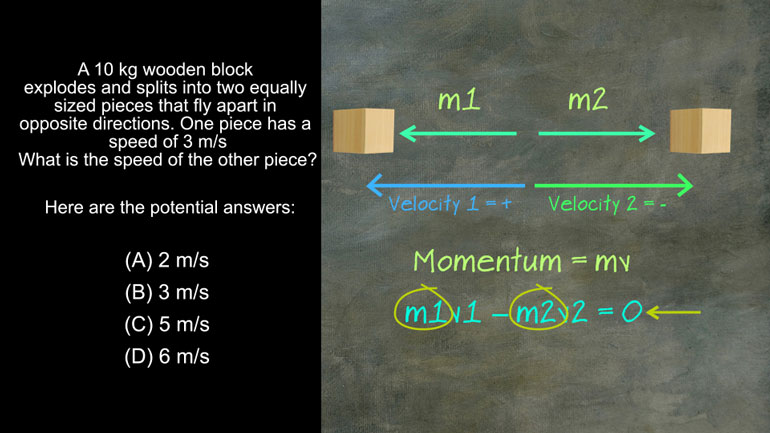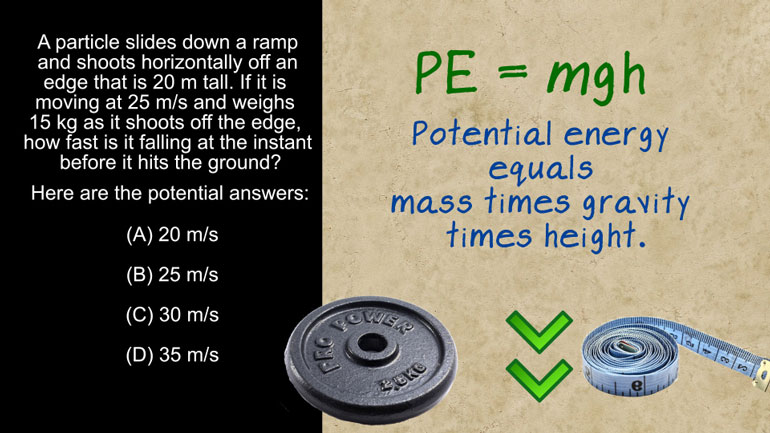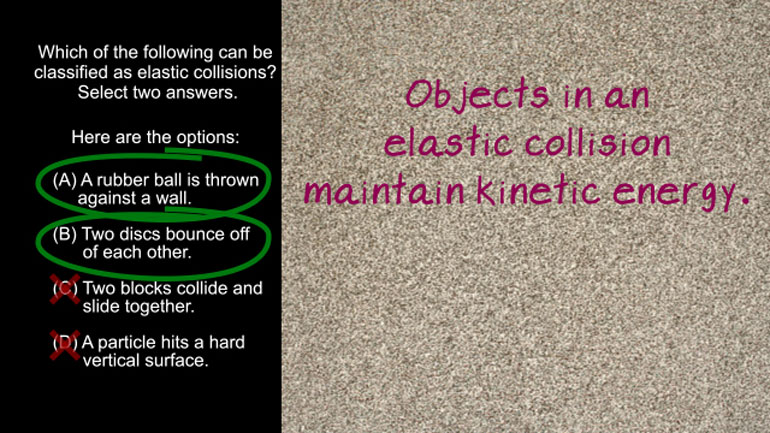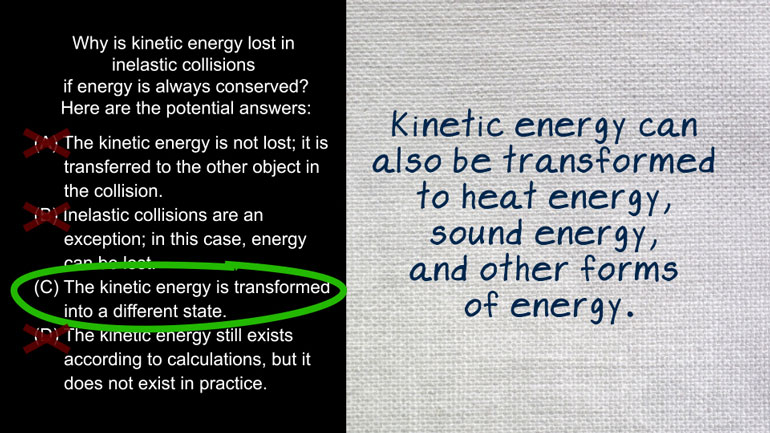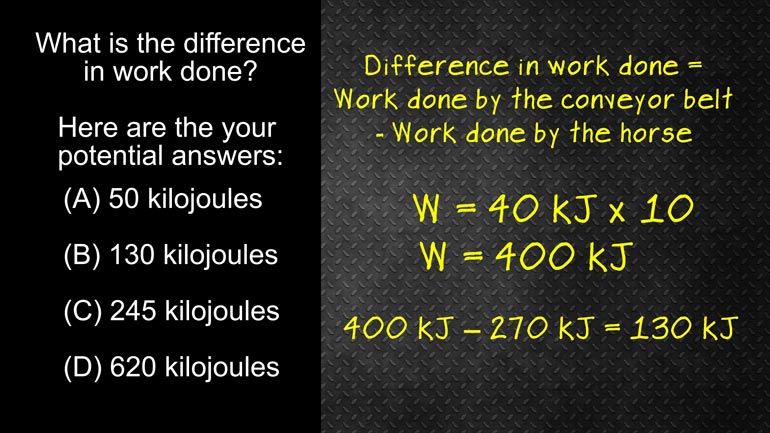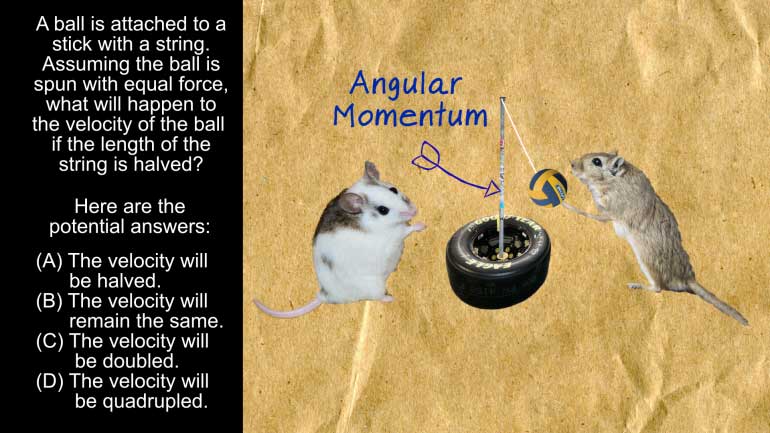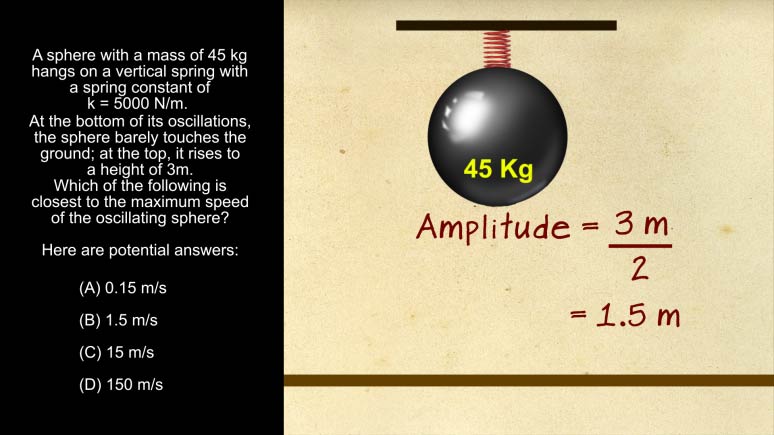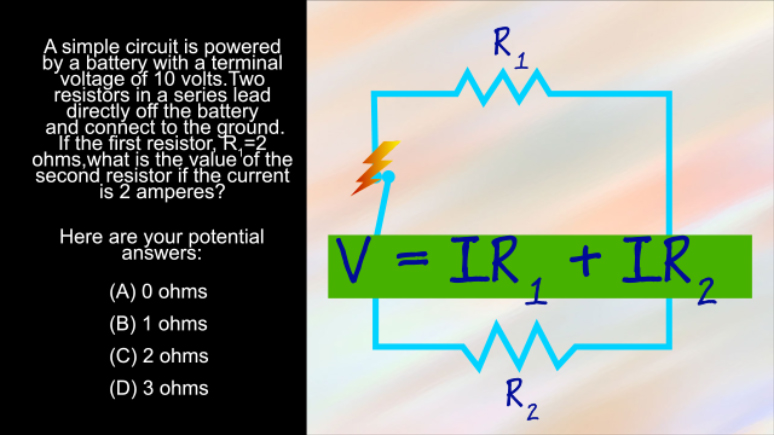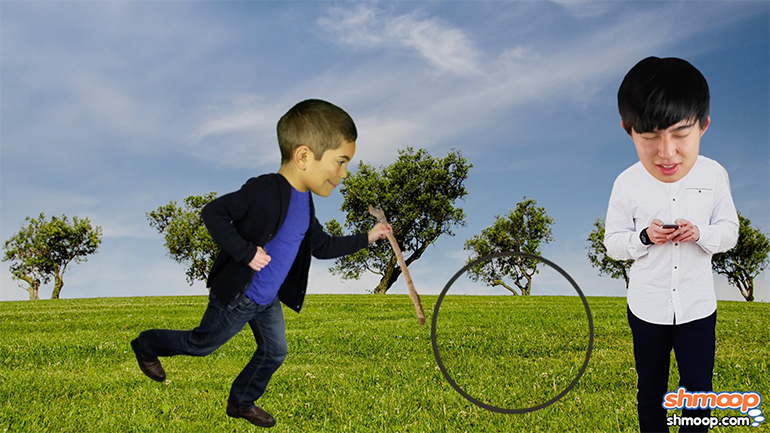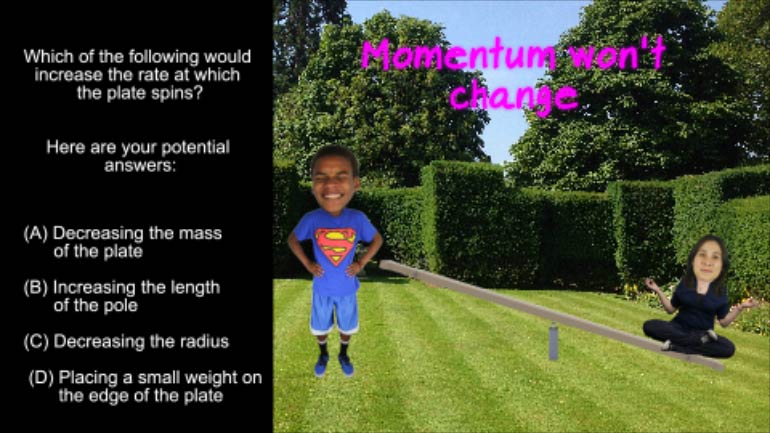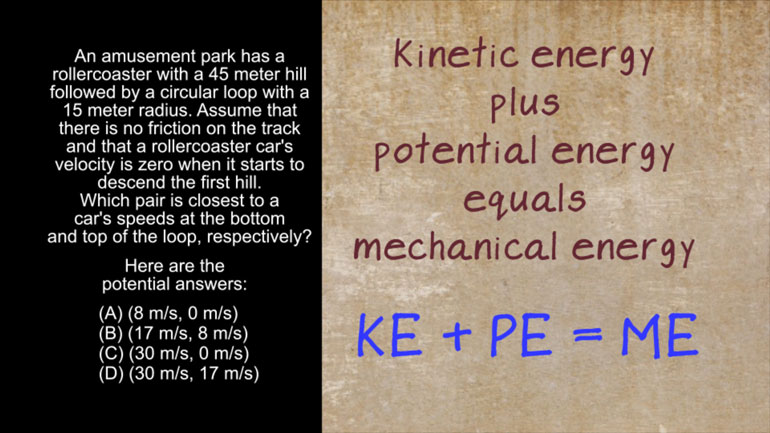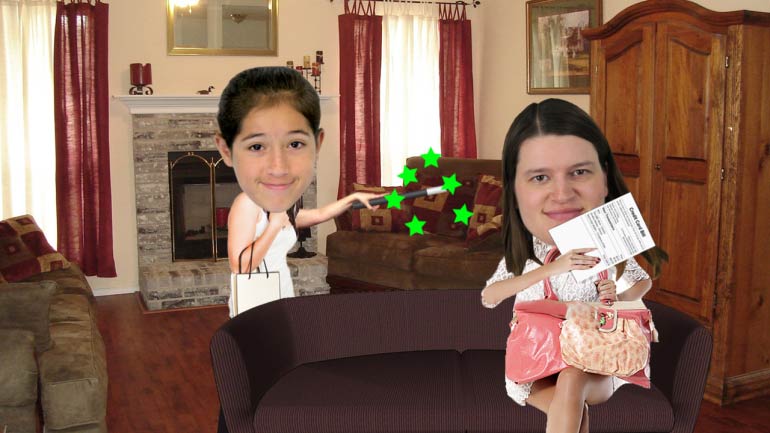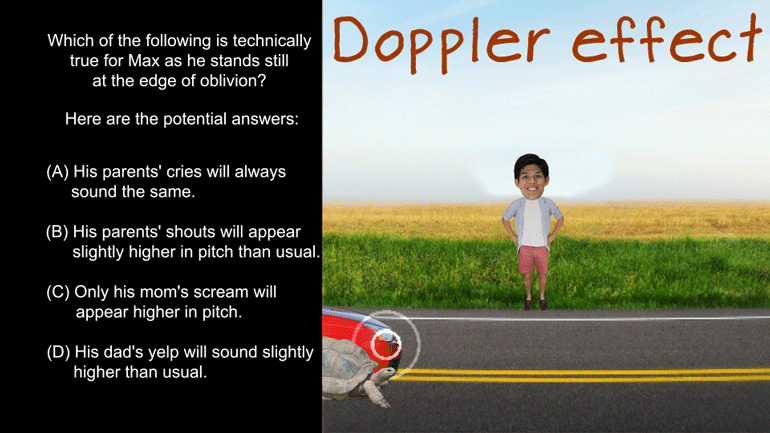ShmoopTube
Where Monty Python meets your 10th grade teacher.
Search Thousands of Shmoop Videos
Changes and Conservation Laws Videos 16 videos
AP Physics 1: 1.1 Changes and Conservation Laws. What is the speed of the other piece of wood?
AP Physics 1: 1.3 Changes and Conservation Laws. How fast is the particle falling at the instant before it hits the ground?
AP Physics 1: 1.5 Changes and Conservation Laws. Which of the following can be classified as elastic collisions?
AP Physics 1: 3.4 Changes and Conservation Laws 6 Views
Share It!
Description:
AP Physics 1: 3.4 Changes and Conservation Laws. Which pair is closest to a cars speeds at the top and bottom of the loop?
Transcript
- 00:00
Thank you We sneak and here's your shmoop du jour
- 00:05
brought to you by amusement parks where we go to
- 00:07
stuff our faces with junk food Then you get on
- 00:10
the rides that are basically designed to induce motion sickness
- 00:13
But we still have a blast And amusement park has
Full Transcript
- 00:16
a roller coaster with a forty five meter hill followed
- 00:19
by a circular loop with a fifteen meter radius Assume
- 00:23
that there's no friction on the track and that a
- 00:25
roller coaster cars velocity is zero when it starts to
- 00:29
descend the first hill Well which pair is closest to
- 00:33
a car Speeds at the bottom and the top of
- 00:35
the loop respectively Alright here the potential answers and meters
- 00:39
per second Got it Okay well looking at this question
- 00:43
we see that it involved potential energy and kinetic energy
- 00:47
And well what does add up Tio that's right Funnel
- 00:49
cakes No wait Sorry Anytime we're dealing with amusement parks
- 00:53
are mined Just well Go straight to delicious fried dough
- 00:56
Kinetic energy plus potential energy equals mechanical energy And since
- 01:00
the total energy and a closed system can't change we
- 01:03
can use this equation to figure out all sorts of
- 01:05
stuff at the top of the track the coaster just
- 01:08
sits there full of potential energy with no kinetic energy
- 01:12
at all with kinetic energy it zero All we need
- 01:15
to do is figure out the maximum potential energy and
- 01:18
we can know the total energy in the system we'll
- 01:21
potential energy equals mass times height times gravity so we
- 01:24
can just plug the numbers in and well wait a
- 01:27
second We don't know the mass of the roller coaster
- 01:30
car I'll never mind folks Looks like we're stuck And
- 01:34
this question is a knowable it's hopeless there's no possible
- 01:37
way to well actually maybe we can figure it out
- 01:40
after all Let's take another look at the situation We
- 01:43
know what the top of the hill The coaster has
- 01:46
all potential energy and no kinetic energy It stands to
- 01:50
reason that if the bottom of the hill the coaster
- 01:52
has no potential energy and all kinetic energy kinetic energy
- 01:56
equals one half mass times the velocity squared But with
- 01:59
this in mind we know that the maximum potential energy
- 02:02
equals the maximum kinetic energy that means mass times gravity
- 02:06
times height equals one half mass times velocity squared and
- 02:10
with these equations balance like that mass cancels itself out
- 02:14
Well we knew he could do it the whole time
- 02:16
Using little algebra we can solve for velocity at the
- 02:18
bottom of the hill That velocity equals the square root
- 02:21
of two times gravity times height When we put in
- 02:25
the numbers we find that the velocity at the bottom
- 02:27
of the loop equals thirty meters per second Okay halfway
- 02:30
there We probably could have ridden this roller coaster three
- 02:33
times by now but it wouldn't be as much fun
- 02:35
is solving this problem right And we've knocked out half
- 02:38
of the answer's a and b you're definitely wrong So
- 02:41
least there's some progress Now think about the energy at
- 02:43
the top of the loop at this point With the
- 02:45
roller coaster above ground level and moving around the loop
- 02:50
we have both kinetic and potential energy going on the
- 02:54
equation Looks like of this right here This thing in
- 02:57
a potential energy equation the height is two times the
- 02:59
radius of the loop since that gives us our total
- 03:02
distance from the ground to the top Well this looks
- 03:05
trickier Remember the total energy and the system can't change
- 03:09
Knowing that we can use the same equation we used
- 03:12
before but just factor in the change in height So
- 03:15
the height in this equation will equal the starting height
- 03:17
minus the height of the loop Right there When we
- 03:20
put in the numbers we find the velocity at the
- 03:22
top of loop is seventeen meters per second So our
- 03:26
answer is d now considering our choices we really could
- 03:30
have ruled out see as soon as we figured out
- 03:32
the velocity at the bottom of loop that's because we
- 03:35
know that the top of the loop is lower than
- 03:37
the top of the hill and that means that the
- 03:39
potential energy at the top of the loop has to
- 03:41
be lower than it was at the top of the
- 03:43
hill And if the potential energy of the system is
- 03:46
lower than it was at the max then kinetic energy
- 03:49
has to be greater than zero for the mechanical energy
- 03:52
to be conserved There's no way The coasters velocity could
- 03:55
be a zero Plus what kind of roller coaster stops
- 03:58
at the top of the loop like no one would
- 04:00
want to ride that thing All right well now we're
- 04:02
going to go lay down All this physics and roller
- 04:03
coaster talk has our head spinning We need some grandma
- 04:06
me and about a pound of cotton candy Sounds good 00:04:08.995 --> [endTime] too Yeah
Related Videos
AP Physics 1: 2.5 Changes and Conservation Law. At what point(s) in this situation is energy lost in any form?
AP Physics 1: 1.4 Changes and Conservation Laws. Find the current across R2.
AP Physics 1: 2.4 Changes and Conservation Laws. Which of the following circuits should the students use?
AP Physics 1: 1.4 Waves. Which of the following is technically true for Max as he stands at the edge of oblivion?
AP Physics 1: 1.5 Waves. What can possibly occur when the two waves reach each other?
